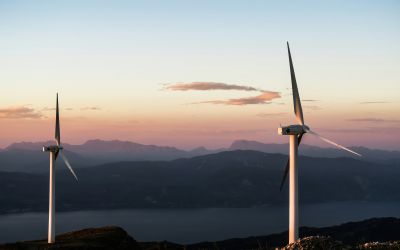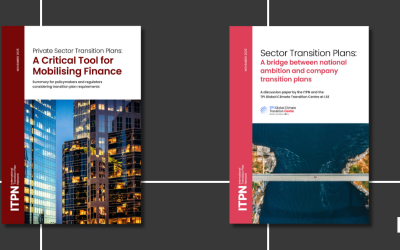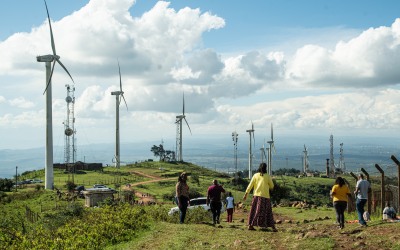Hugo Pereira on the investment opportunity from EV charging infrastructure
Climate Action caught up with Hugo Pereira, Chief Growth Officer at EVBox, to discuss the investment opportunity from EV charging infrastructure.

As part of your opening address at this year’s Sustainable Investment Forum, you started by talking about a couple of huge environmental crises we’ve faced. Why did you choose to begin your discussion that way?
In thinking about the crisis of climate change, I was looking for a way to frame the discussion around the idea that crises can lead to opportunity. I mentioned both the Deepwater Horizon oil rig explosion in the Gulf of Mexico and the Fukushima nuclear plant accident in Japan. Two huge and awful disasters. But both led to significant and positive changes. In the case of the oil rig explosion, it was a scientific breakthrough—the invention of a “capping stack” that’s now a standard emergency measure for deepwater drilling operations. With Fukushima, it was more of a political breakthrough—the turnabout in Germany with regard to moving away from nuclear and coal and embracing renewables.
Unfortunately, sometimes it takes a crisis to get our attention. With climate change, it’s a much bigger crisis on a global scale. And yet, because it’s been an incremental and not a sudden event—although that’s changing—we’ve had a difficult time getting serious about the issue. Well, we can’t procrastinate any longer. The time has long passed for foot-dragging. It’s code red for the Earth, as the most recent IPCC report says.
But I, and my colleagues at EVBox, firmly believe that the climate crisis represents an unprecedented opportunity for change—and for investment in, among other things, electric vehicle charging infrastructure. That’s really my biggest point here. It’s why we chose to be here and support the Sustainable Investment Forum.
Can you talk a bit more about the scope of the investment opportunity?
Absolutely. Let’s start with the size of the problem. The transportation sector is a huge contributor to global CO2 emissions. Actually, in the United States, it’s the single largest culprit: More than one-fourth (about 28 percent) of direct CO2 emissions in the U.S. comes from cars that burn fossil fuels. So that has to change, and fast.
As folks in the investment community know, change brings opportunity. BloombergNEF has done some wonderful analysis and reporting on the scope of the opportunity. Basically, they say that in order to reach net-zero carbon—which has to happen—we’ve got to have all our vehicles running on clean, renewable energy by mid-century. It’s not going to happen overnight. But it has to come fast. Leading up to the 2050 deadline, we have some important milestones we’ll have to hit. By 2030—less than a decade away—60 percent of all new car sales will need to be EVs. By 2035, we can’t sell ANY more fossil-fueled cars. Zero.
The numbers that BloombergNEF has put on the size of the opportunity are staggering: EVs alone represent a $7 trillion market opportunity between now and the end of this decade. And between now and 2050? It’s $46 trillion.
And you can’t run EVs without charging ports, obviously. What does the opportunity for charging infrastructure look like?
Exactly. Look, we get it that most of the media, investors, and consumers pay more attention to EVs. They’re obviously sexier than charging stations! But you’re right in saying that EVs are not going anywhere without the charging infrastructure behind them. The more EVs that are sold, the more public and semi-public charging infrastructure we’ll need. The more charging infrastructure out there, the more EVs that people will buy.
Again, BloombergNEF has put some numbers to the scale of the opportunity. They’re estimating that we’ll need 722 million EV charging ports by mid-century if we want to achieve a net-zero economy.
Now, let’s put that number in perspective. There are currently about 43,000 public charging EV stations in the U.S. and more than 110,000 charging ports. So we’re talking about the need for millions of new public charging stations and ports. EVBox alone is committed to installing 1 million charging ports in the very near future. The Biden administration is proposing funding for half a million new charging stations. Those will be important steps along the way, but only a starting point when we consider the numbers we need to reach. Really, when it comes to investing in what we need to arrest climate change, it’s a tremendous amount.
Here’s another way to look at it. Let’s compare it to gas pumps. They seem pretty ubiquitous today, right? I mean, it’s hard to go anywhere without passing a gas station. In the U.S., there are about 115,000 gas stations, most of which have multiple pumps. That’s a lot of ports, if you will. But it pales in comparison to the number of EV charging ports we’ll need.
And really, it’s not a perfect comparison. We used to say that EV charging stations need to be as widespread as gas stations. But in reality, they need to be much more commonplace. This is because EVs don’t “fill up” the same way as gas cars. The model actually is more like how we charge our smartphones. We don’t normally wait until our phones are at 1 percent to recharge. We charge whenever we have an opportunity. Likewise, the ideal EV charging model is one where EV charging is everywhere you drive or park—in every lot, every garage, and every pitstop location. You go to the grocery store, you plug in. You go to work, you plug in. You grab lunch during a road trip to grandma’s. You get the idea.
And here’s a big point that we want to make: EV infrastructure is the enabling tool for EVs. It’s the key to unlocking the EV market. Because drivers need the reassurance that they’ll be able to keep their batteries charged. We've all heard that range anxiety is a major obstacle to people buying EVs. As soon as drivers begin to see more and more charging stations, they’ll gain confidence that EVs are the way to go and this will accelerate EV adoption.
Another point you make in your speech is that EVs and EV infrastructure are good investments for companies and organizations. Can you expand on that?
As you know, Environment, Social and Governance (ESG) investing is becoming the new normal. So companies are really paying attention to how investors rank their ESG scores. And they know other key constituents are watching too, including regulators, policymakers, employees, customers, suppliers, and so on. Our point is that investing in EVs and EV infrastructure is a practical and impactful way to reduce your climate risk exposure.
We see two broad areas for investment: One, companies with large fleets are transitioning to EVs. Already, we’re seeing substantial movement here. Last year, for example, Amazon ordered 100,000 light-duty EVs from Rivian. Walmart and UPS announced that they would transition to an all zero-emission vehicle fleet by 2040. That’s just three examples out of the many major organizations committed to this change. There’s a lot of momentum happening on this front, and it’s only going to accelerate.
Two, we’re seeing retail businesses trying to establish themselves now as charging destinations. It’s becoming a competitive differentiation: You don’t want your customers going elsewhere because your competitor down the road offers EV charging and you don’t. But after a while, it will just become table stakes. The comparison is to WiFi availability. Remember how it started? You were lucky to find a WiFi network. Then you had to go through cumbersome registrations and payment plans. Now it’s just expected. So, charging won’t just be a “nice-to-have” amenity after a while. It will become a must-have for any business that hopes to attract and retain its customers.
What’s the bottom-line message you’d like to leave with people attending the Sustainable Investment Forum?
Really, two things: One, that the transformation of mobility is a historic investment opportunity for EV infrastructure. And two, that—all jokes about chickens and eggs aside—investing in widespread EV charging infrastructure is the key that will unlock the EV market.
Hugo Pereira spoke at the Sutainable Investment Forum North America 2021. You can watch his session on demand by signing up here.






